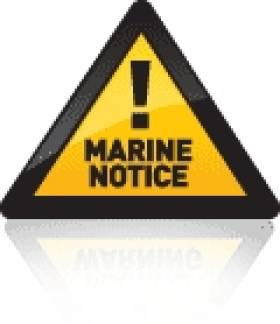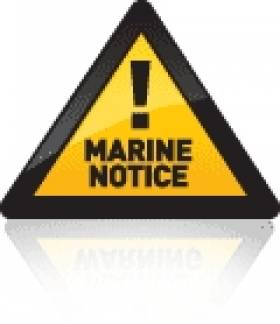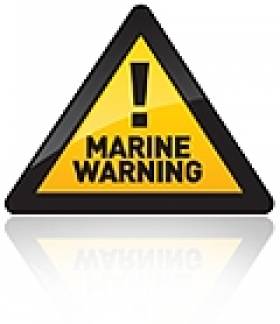Displaying items by tag: Waverider buoy
#MarineNotice - Marine Notice No 21 of 2015 from the Department of Transport, Tourism and Sport (DTTAS) advises that Shell E&P Ireland Ltd will be deploying a waverider buoy in late May 2015, weather permitting, in order to help predict sea conditions for the Corrib P2 well intervention work by the Ocean Guardian (Callsign V7FF7).
The buoy size is 90cm in diameter, and is set to be deployed at co-ordinates 54°19.285’N, 011°05.544’W (WGS84) approximate, with a 100m watch circle. The water depth at this location is 336 metres.
The waverider buoy will remain on site for approximately three months. Pictured here, it is yellow in colour and will flash yellow five times every 20 seconds.
All vessels are requested to give the waverider buoy a wide berth.
Marine Notice: Deployment Of Waverider Buoy On Corrib Gas Field
#MarineNotice - The Department of Transport, Tourism and Sport (DTTAS) has been advised that Shell E&P Ireland Limited will be deploying a Waverider buoy in early-to-mid April in order to help predict sea conditions for the Corrib P6 well intervention work by the Ocean Guardian (Call Sign V7FF7).
The buoy size is 90cm in diameter, and will be deployed at the location (approximate, with 100m watch circle) 54° 20’N, 011° 05’W (WGS84), weather permitting. The water depth at this location is 360 metres. The Waverider buoy will remain on site for approximately three months.
The wave rider buoy is yellow in colour, and will flash yellow 5 times every 20 seconds. A photograph of what the buoy looks like in the water is included in Marine Notice 23 of 2014, a PDF of which is available to read or download HERE.
All vessels are requested to give the wave buoy a wide berth.
#MarineNotice - Marine Notice No 15 of 2013 from the Department of Transport, Tourism and Sport (DTTAS) advises mariners that a hydrographic and geophysical survey operation is being undertaken by INFOMAR for the Sustainable Energy Authority of Ireland till 25 April.
The RV Celtic Voyager (Call sign EIQN) is carrying out the survey operations within an area bounded by co-ordinates included in the notice, available as a PDF to read or download HERE.
The vessel is towing a magnetometer sensor with a single cable of up to 100m in length. It is also displaying appropriate lights and markers, and will listen in on VHF Channel 16 throughout the project.
Meanwhile, Marine Notice No 16 of 2013 advises that Shell E&P Ireland is deploying a Waverider buoy off northwest Co Mayo to help predict sea conditions for the laying of an offshore umbilical to the Corrib Gas Field later this year.
The buoy is yellow in colour and will flash yellow five times every 20 seconds. The notice includes an image of what the buoy looks like in the water, as well as the co-ordinates of its placement.
All vessels are requested to give the wave buoy a wide berth.































































